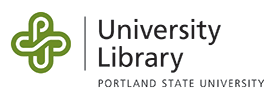Sponsor
The authors gratefully acknowledge funding for this research from Portland State University’s Hatfield School of Government and the State of Oregon’s Department of Fish and Wildlife.
Published In
Professional Geographer
Document Type
Article
Publication Date
1-1-2025
Subjects
Hydrology -- Research -- Watersheds
Abstract
Across the Cascadia bioregion, salmon and steelhead are ecological and cultural keystone species that contribute to and illustrate riverine health. Due to complex social, economic, and ecological relations over the past 150 years, many Columbia River Basin salmon and steelhead populations are now listed as threatened or endangered in the United States. This research uses the 2017–2020 Columbia Basin Partnership Task Force as a case study to understand how this collaborative governance effort of sovereign entities and nonsovereign stakeholders navigated competing water claims to reach consensus on aspirational qualitative and quantitative goals for salmon and steelhead restoration. Using semistructured interviews and a review of meeting minutes, reports, and other documents produced by the group, we found that parts of the collaborative process, in particular the pairing of Indigenous knowledge and science with Western science for decision-making, unsettled long-standing territorial claims and changed the span and durability of hydrosocial networks in the Columbia River Basin.
Rights
Copyright (c) 2025 The Authors
This work is licensed under a Creative Commons Attribution 4.0 International License.
Locate the Document
DOI
10.1080/00330124.2025.2572421
Persistent Identifier
https://archives.pdx.edu/ds/psu/44236
Citation Details
Bui, T.-K., & McLain, R. (2025). Collaborative Governance and Hydrosocial Territorialization: Reaching Consensus on Salmon Restoration Goals in the Columbia River Basin. The Professional Geographer, 1–9.


